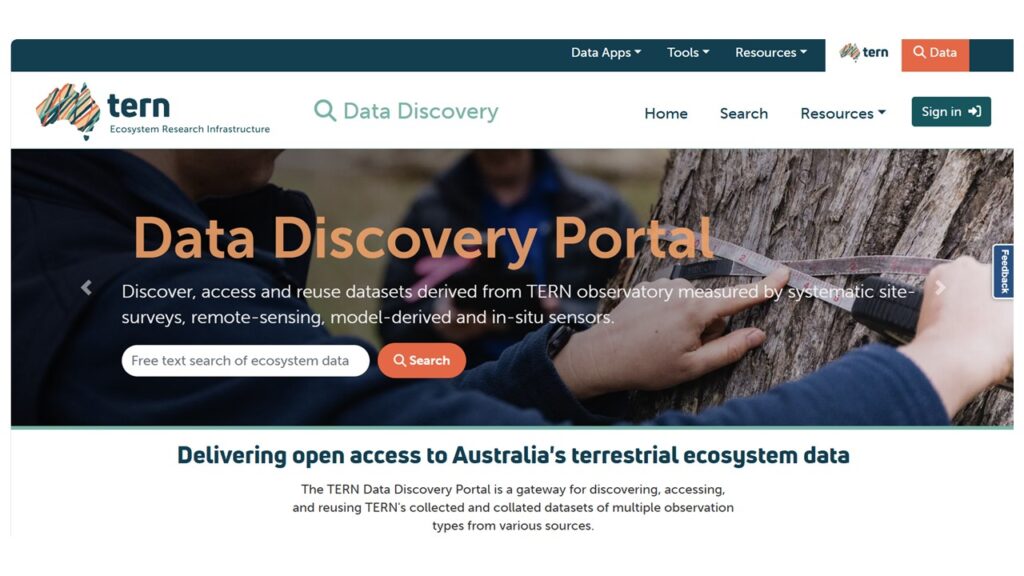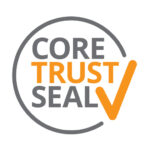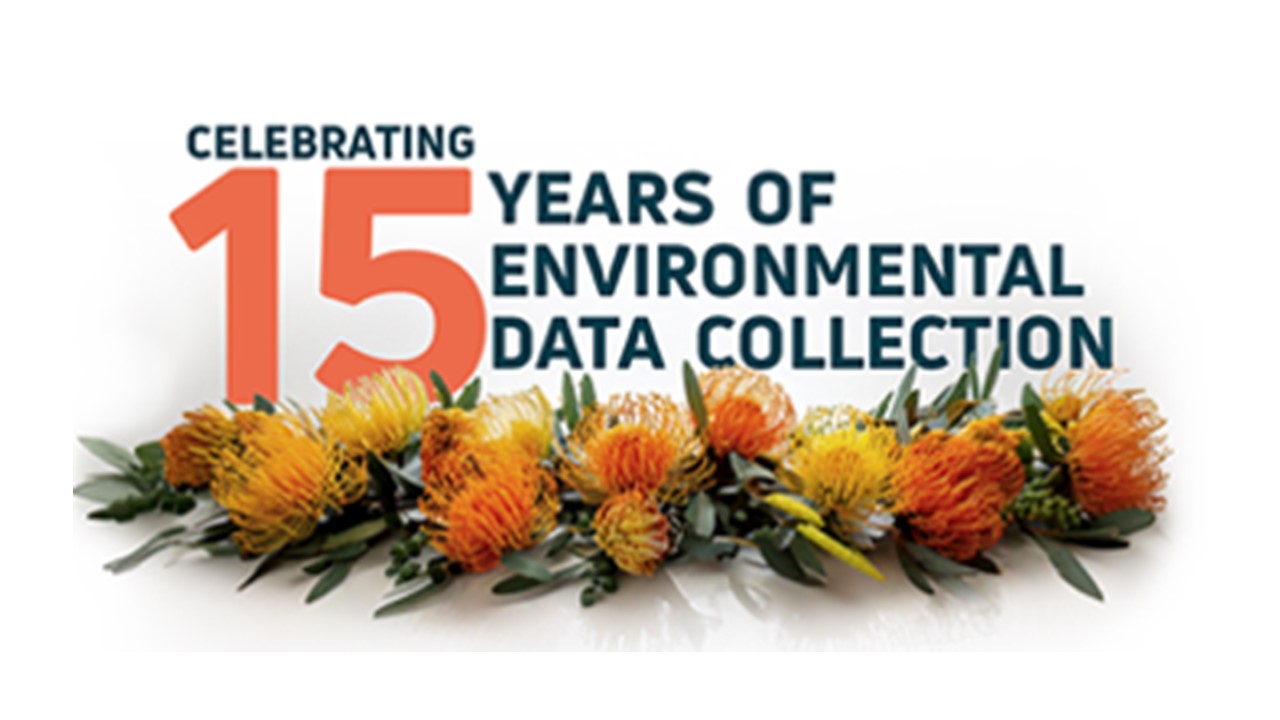TERN’s cyberinfrastructure services the broad Australian environmental research community by providing quality digital information about Australia’s environment that can be used for research and as a basis for decision-making.
The cyberinfrastructure manages TERN’s multi-faceted ecosystem observatory’s collected data and digital objects (e.g., images and sound records). Innovation has been key to meeting the challenge of continuously improving discovery and access for the ever-increasing quantity and diversity of data collected and curated by TERN.
First introduced in 2012, the TERN Data Discovery Portal (TDDP), serves as a gateway to the vast and growing collection of environmental datasets generated by TERN and its partners.
In 2025, coinciding with the celebration of TERN’s 15 years of environmental data collection using NCRIS-enabled research infrastructure, TERN has launched a new TDDP, a semantically enabled data infrastructure that streamlines discovery, access, and reuse of ecosystem data and digital artefacts.

“The main drive over the past year for the TERN Data Services and Analytics (TDSA) platform has been to strengthen the TERN data infrastructure to be more semantically enabled”, said Dr Siddeswara Guru, head of the TERN Data Services and Analytics (TDSA) platform. “We have significantly streamlined the data ingestion processes, metadata discovery, raster data publication and visualisation – all to support researchers and decision makers in Australia and globally”
The new TDDP now uses a DCAT-based RDF standard, making the portal semantically enabled and interoperable with other open data catalogues across the web. Any datasets aggregated from external partners will also be available in a machine-readable DCAT standard. Currently, some of the TERN datasets published from CSIRO and the NCRIS-enabled National Computational Infrastructure (NCI Australia) repositories are harvested and can be discoverable from the TDDP.
- DCAT, or Data Catalog Vocabulary, is an RDF vocabulary designed to facilitate interoperability between data catalogues published on the Web
- RDF (Resource Description Framework) is a framework for describing and exchanging data on the web.
TERN’s Director, Dr Beryl Morris, congratulated the TERN Data Services and Analytics team. She said, “not only is TERN one of the first infrastructures in Australia to adopt this framework but the profound re-alignment of the system has been almost invisible to the user during the changeover, with neither unwelcome changes in the user interface nor interruption to access.”
To further enhance usability, TERN has implemented RO-Crate, a human- and machine-readable standard for describing datasets and related artefacts. Every dataset now includes a RO-Crate metadata package, and all downloads from TERN’s EcoImages and EcoPlots are compliant with this standard.
The TERN data infrastructure also introduces support for Cloud Optimised Geotiffs (CoGs) and SpatioTemporal Asset Catalogs (STAC), which allow users to efficiently browse and access large raster datasets without downloading entire files.
 TERN celebrates two other cyberinfrastructure achievements
TERN celebrates two other cyberinfrastructure achievements
- Attainment of Core Trust Seal certification for its data repositories, providing data providers and users with independent assurance that TERN is operating at international best practice for trustworthy data repository management
- A stable release of EcoPlots, TERN’s data integration platform for systematic ecological survey data. EcoPlots now hosts data from TERN observatories, state agencies and long-term ecological networks, with advanced filtering by regions, parameters, feature type, species, location, and time. Specimen samples collected from the TERN surveillance monitoring observatory will soon be published on the EcoPlots site
With these new capabilities and improvements, TERN has reaffirmed its role as a national leader in environmental data infrastructure and its ongoing commitment to open science and data accessibility.


